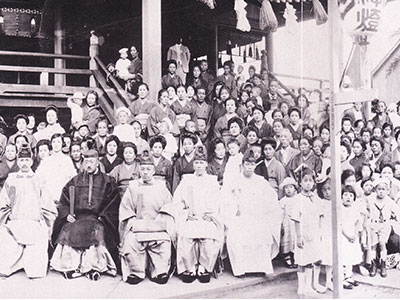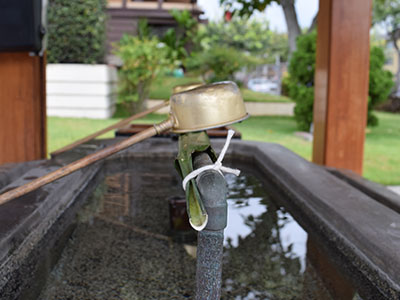
The Shinto Belief
Broadly speaking, “Shinto” is the spontaneous and natural religious worship of Kami (Gods, Deities). Since the dawn of history, people felt the spiritual force in Nature, all things that were beyond human understanding—animate, inanimate, ancestral spirits, astronomical and natural phenomena. That mystic presence in Nature was worshiped as Kami. They did not simply believe but felt the spiritual presence. They expressed their awe and reverence while they expressed their gratitude in their prayers. They understood that a human being is only a small part of the universe, and should live to respect the natural environment.
In Shinto, man is born pure without sin. Our soul originates from the spiritual world of Kami. In society, it is believed that all people are assigned certain roles in life by Kami and should serve with moral sincerity. This is known as “Mikoto-mochi” so that our souls may, after physical death, return into the spiritual world as Kami. It is a virtue to benefit mankind. Our Shrine especially houses the Okuninushi-no –OKami, the master Kami of the spiritual world who bestow upon us blessings and happiness in this life and in life hereafter.
Although the Shinto has been widely practiced in various forms, Izumo Taisha in Japan was formally incorporated in 1882 as a sectarian religious organization called “Izumo Taishakyo”, also known as “Izumo Oyashirokyo.”
Okuninushi-no-OKami, the primary Kami of our Shrine, is basically the God of the great land, the earth. He administers the ground-breaking and agriculture, healing and medicine, also presides spiritual world, including life hereafter. He is known for the virtue of invisible good human relationships and marriage called “Enmusubi.” Due to the many virtues attached to Okuninushi-no-OKami, He is considered by many worshipers to be the predominant Kami in Japanese mythology.
Some of the fundamental beliefs expressed in our Izumo Taisha Sect founder’s writings deal not only with purification and blessings of the physical self but also the inner personal development achieved by forming organizations consisting of honest and benevolent people, to seek to make their hearts upright, to govern the body, to have compassion for those less fortunate, to seek genuine happiness, to attain that spiritual power which pierces the known and unknown, to express gratitude for divine goodness so that in the spiritual world to come, such persons will shine with the glory of those who have become Kami.

